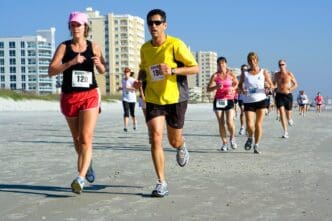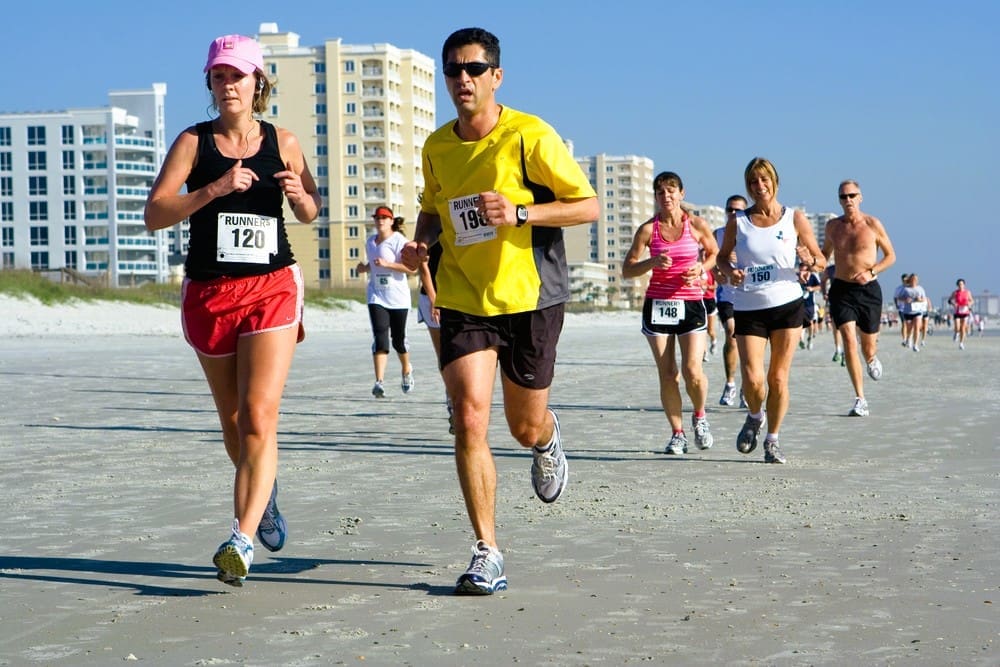A Quick Takeaway
The Story Behind the Trend
How to Make It Work for You
The Community View
“Runner’s face” is a common, yet often misunderstood, aesthetic concern where individuals, typically those who engage in high-intensity or prolonged outdoor exercise, develop a gaunt, aged appearance characterized by sunken cheeks, prominent wrinkles, and a loss of facial volume. This phenomenon is not exclusive to runners but can affect anyone maintaining a rigorous fitness regimen, particularly outdoors. Experts from the Jacksonville area emphasize that while an active lifestyle is paramount for health, understanding the underlying causes and implementing strategic preventative measures can significantly mitigate these undesirable facial changes, allowing individuals to reap the benefits of exercise without compromising their skin’s vitality.
What Exactly is Runner’s Face?
Despite its name, “runner’s face” is not a medical diagnosis but rather a colloquial term describing a specific set of facial changes associated with an active lifestyle. It typically manifests as a more aged appearance than one might expect for a person’s chronological age, often characterized by a hollowed or gaunt look.
This appearance often includes a noticeable loss of fat and elasticity in the cheeks, temples, and under-eye areas. These changes can lead to more pronounced wrinkles, sagging skin, and an overall deflated look that can be distressing for active individuals.
The Science Behind the Sag: Why Does it Happen?
Understanding the root causes of runner’s face is crucial for effective prevention. It’s a multifaceted issue, stemming from a combination of physiological, environmental, and mechanical factors that collectively impact facial aesthetics.
Volume Loss: The Primary Culprit
One of the most significant contributors to runner’s face is the reduction of subcutaneous fat in the face. When individuals engage in consistent, high-intensity exercise, particularly endurance activities, they often maintain a lean body composition, which can extend to facial fat.
A sustained caloric deficit, common in athletes striving for peak performance, further depletes these fat reserves. This loss of underlying support causes the skin to lose its plumpness, leading to a hollowed appearance and making existing wrinkles more apparent.
Environmental Factors: Sun and Wind Exposure
Outdoor activities, a staple for many Jacksonville residents, expose the skin to harsh environmental elements. Prolonged exposure to ultraviolet (UV) radiation from the sun is a well-documented accelerator of skin aging.
UV rays break down collagen and elastin fibers, the structural proteins responsible for skin firmness and elasticity, leading to wrinkles, fine lines, and sagging. Additionally, constant wind exposure can dehydrate the skin, exacerbating dryness and contributing to a rougher texture.
Gravity and Repetitive Motion
The repetitive impact and bouncing motion inherent in activities like running can also play a role. While the effect is subtle, over thousands of miles, the constant downward pull of gravity combined with facial muscle contractions can contribute to skin laxity.
Furthermore, facial expressions made during intense exercise, such as squinting against the sun or grimacing during effort, can deepen dynamic wrinkles around the eyes and forehead over time.
Dehydration
Adequate hydration is vital for overall health and particularly for skin integrity. During strenuous exercise, especially in warm climates like Jacksonville, the body loses significant fluids through sweat.
Insufficient rehydration can lead to systemic dehydration, which directly impacts skin cells, making them appear less plump and elastic, thereby accentuating fine lines and contributing to a dull complexion.
Dispelling Myths: It’s Not Just for Elite Athletes
It is a common misconception that runner’s face only affects ultra-marathoners or elite athletes. In reality, anyone who consistently engages in prolonged outdoor exercise, regardless of their competitive level, can be susceptible.
Factors such as individual genetics, skin type, and the intensity and duration of activity all play a role in how quickly and severely these changes may manifest. While some individuals may be more genetically predisposed to maintain facial volume, others may notice changes more rapidly.
Jacksonville Experts’ Prevention Secrets: A Holistic Approach
Local dermatologists, sports medicine practitioners, and wellness coaches across Jacksonville advocate for a comprehensive, multi-pronged approach to prevent runner’s face. Their advice integrates smart skincare with thoughtful lifestyle adjustments and strategic training practices.
Strategic Skincare: The First Line of Defense
Effective skincare forms the cornerstone of prevention, especially for active individuals. Protecting the skin from environmental damage is paramount.
Applying a broad-spectrum sunscreen with an SPF of 30 or higher daily, even on cloudy days, is non-negotiable. Sunscreen should be reapplied every two hours, or more frequently if sweating heavily, to ensure continuous protection against UVA and UVB rays.
Incorporating antioxidant serums, such as those containing Vitamin C or E, into a morning routine can help neutralize free radicals generated by sun exposure and pollution. These powerful ingredients bolster the skin’s natural defenses and promote collagen health.
Regular moisturizing is crucial to maintain the skin’s barrier function and hydration. Products containing hyaluronic acid and ceramides are excellent choices for drawing moisture into the skin and preventing transepidermal water loss.
For nighttime repair, retinoids (Vitamin A derivatives) can be highly beneficial. They stimulate collagen production, accelerate cell turnover, and can help to mitigate existing fine lines and improve overall skin texture, though they require careful introduction due to potential sensitivity.
Nutritional Support: Fueling Facial Health
What you eat significantly impacts your skin’s health and appearance. Jacksonville nutritionists emphasize that adequate caloric intake is essential to prevent the body from drawing on facial fat reserves.
Ensure your diet includes a balance of macronutrients and is rich in healthy fats, such as omega-3 fatty acids found in fish, nuts, and avocados. These fats are crucial for maintaining skin elasticity and a healthy glow.
Staying well-hydrated throughout the day, not just during workouts, is fundamental. Drinking plenty of water and incorporating electrolyte-rich fluids can prevent dehydration, which directly affects skin plumpness and resilience.
Consuming a diet abundant in antioxidant-rich fruits and vegetables helps combat oxidative stress, which contributes to premature aging. Berries, leafy greens, and colorful peppers are excellent choices for skin-supporting nutrients.
Smart Training Practices: Modifying Your Routine
While exercise is beneficial, modifying certain aspects of your routine can minimize its impact on your face. Cross-training with activities that are less impactful, such as swimming, cycling, or strength training, can reduce repetitive facial bouncing.
Varying the intensity and duration of your runs or workouts can also be helpful. Incorporating shorter, higher-intensity interval training alongside longer, moderate-intensity sessions can still provide cardiovascular benefits without prolonged exposure to environmental stressors.
Wearing protective gear during outdoor activities is a simple yet effective strategy. Wide-brimmed hats and UV-protective sunglasses shield delicate facial skin and eyes from direct sun exposure, reducing squinting and UV damage.
Consider incorporating indoor training sessions, especially during peak sun hours or when environmental conditions are particularly harsh. Treadmills or indoor cycling can offer a break from sun and wind exposure while maintaining fitness levels.
Lifestyle Adjustments: Beyond the Run
Beyond specific training and skincare, broader lifestyle choices significantly influence skin health. Prioritizing 7-9 hours of quality sleep each night allows the body and skin cells to repair and regenerate, combating daily wear and tear.
Managing stress through practices like yoga, meditation, or spending time in nature can also benefit your skin. Chronic stress can lead to inflammation and hormonal imbalances that negatively impact skin health and accelerate aging.
Avoiding detrimental habits such as smoking and excessive alcohol consumption is critical. Smoking severely impairs blood flow to the skin and breaks down collagen, while alcohol dehydrates the body, both accelerating the aging process and diminishing skin vitality.
Professional Interventions: When Prevention Isn’t Enough
For individuals who already exhibit signs of runner’s face, or for those seeking additional measures, various professional dermatological treatments are available. These interventions are typically corrective rather than preventative, addressing existing concerns.
Dermal fillers, such as hyaluronic acid-based products, can restore lost facial volume in areas like the cheeks and temples, providing a more youthful and plump appearance. Laser treatments and microneedling can stimulate collagen production, improving skin texture and reducing fine lines.
It is important to consult with a board-certified dermatologist to discuss the most appropriate and safe treatment options tailored to individual needs and goals. These treatments should be considered as complements to a robust preventative strategy, not replacements.
Integrating Prevention into Your Active Lifestyle
The key to preventing runner’s face lies in consistency and integration. Making these preventative measures habitual parts of your daily routine ensures long-term success. It’s about finding a balance where your commitment to fitness enhances your overall well-being without inadvertently aging your appearance.
Embrace a mindset that views skin health as an integral component of your athletic performance and overall wellness. By being proactive and diligent, you can continue to enjoy your active lifestyle with confidence, knowing you are protecting your skin from the rigors of your passion.
Ultimately, “runner’s face” is a largely preventable condition that doesn’t have to be an inevitable consequence of an active lifestyle. By adopting the holistic strategies recommended by Jacksonville’s experts—prioritizing strategic skincare, thoughtful nutrition, smart training, and healthy lifestyle choices—individuals can maintain their fitness goals while preserving a vibrant, youthful complexion. It’s about celebrating both the strength of your body and the health of your skin, fostering a sustainable approach to wellness that truly reflects your inner vitality.







